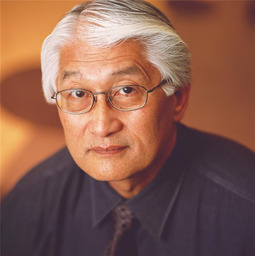How Green is Your EV?


If you are a lover of old classic movies, you may remember a 1941 film, How Green Was My Valley. It is the story of a young boy from a hardworking, coal mining family growing up in the South Wales Valleys during the late Victorian era. The movie opens with a monologue of the grown boy saying: “And I'm going from my valley. And this time, I shall never return." The valley and its villages are now blackened by the dust of the coal mines that surround the area.
Coal has been the crucial underpinning for the Industrial Revolution and the development of industrial economies based on manufacturing from the mid-18th century onwards. Coal was necessary because industrialization required more concentrated forms of energy than previously available. Human and animal muscle, rivers with falling water, trees to burn, wind to turn windmills and fill sails—these energy sources were limited in their local availability and in their energy density.
Coal was much more efficient than charcoal to manufacture iron, run steam engines, and propel trains. Even when electricity came onto the scene, it was generated by coal-fired steam engines. Coal is readily available and relatively cheap to mine, distribute and consume and that is why many economies still use coal to this day.
However, to be carbon neutral we must move away from coal and other fossil fuels or be blanketed by CO2 that’s produced when burning it.
Hitachi’s founder Namihei Odaira grew up during the industrial revolution in Japan, which was quick to adopt electricity driven by coal fired steam generators. My mother who was born in the U.S. was amazed when she visited Japan as a little girl to see all the houses had electrical lights while her house in California still used kerosene lamps.
Odaira believed in the future of electricity and he studied electrical engineering at the university. Before he founded the Hitachi Company, he worked on the building of a hydroelectric power plant for a mining company. At that time all the equipment was developed and manufactured in Europe. Odaira had the vision to develop and build the first hydroelectric generator in Japan and formed Hitachi in 1910. When WW I stopped the shipment of generators from Europe, Hitachi established itself as a trusted supplier of electrical equipment.
While electrification is now ubiquitous, that alone does not solve our CO2 problem, since the primary fuel for electricity still relies heavily on fossil fuels. According to an International Energy Association report, fossil fuels are used to generate 63% of the world’s electricity. (80% of the world’s energy is still generated by fossil fuels)
The electrification of the car has the possibility to provide a zero-carbon transport, but that is only possible if the electricity it uses is generated by non-fossil primary fuels like wind, solar, hydro, or nuclear. This means a disruptive change to the existing automotive and energy business models covering all sections of the value chain. Plugging your EV into a socket at home when you come home after work and letting it charge for 8 to 12 hours has a different usage pattern than a mail truck with a fixed schedule or an Uber driver with a random schedule. Unfortunately, fossil fuels are subject to the whims of nature and the demand must be supplemented by batteries or on demand types of fuel (like fossil fuels?).
To figure this out requires data, IT and OT data; real live experience, and data intelligence. That is what Hitachi has been doing with a project called Optimise Prime. This project is a collaborative effort. With the backing of UK energy regulator Ofgem, Hitachi, UK Power Networks, Royal Mail, Centrica, Uber and Scottish and Southern Electricity Networks are working together to collect and analyze data from the vehicles.
Hitachi Vantara is designing, building, and operating the project’s IoT platform. The platform manages all the data from the vehicles and helps develop the results. Hitachi is also coordinating the project workstreams and developing solutions to optimize the charging of fleets of EVs at depots, allowing more vehicles to charge within the network’s existing capacity.
Where will people need chargers? What is the best time to charge them up? Can our electricity grid provide enough power in the right places? Can zero carbon electricity be provided to meet demand? These are all questions which need to be answered, and quickly.
So, how green is my EV? We will soon have the real answer and then we will know how to address it.

Hu Yoshida spent 24 years at Hitachi Vantara helping define technical direction and enabling customers to address their digital transformation needs. He is widely known in the industry and was instrumental in evangelizing Hitachi's unique approach to storage virtualization.